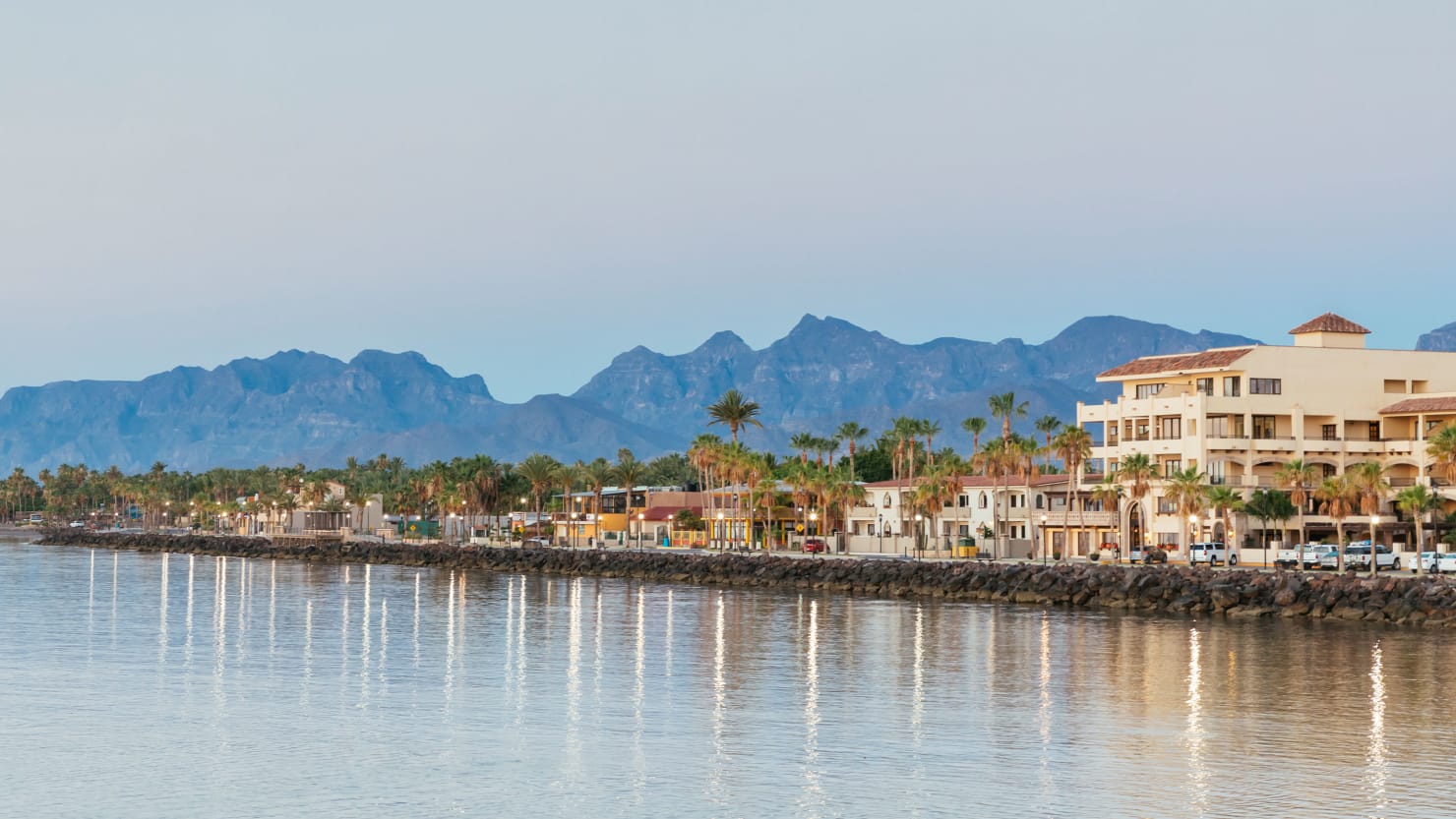After sailing, scuba diving, and nursing tequila hangovers over the years in the popular Mexico playground of Cabo San Lucas, I wanted to see what other destinations were worth exploring in the region. In the middle of the Baja California peninsula, the sleepy desert town of Loreto called my name.
Friends who recommended the cobblestone-clad town correctly described it as a peaceful town with a rocky, golden, arid landscape and white sand beaches with usually very few people around. Downtown Loreto itself is awash in colorful family-run restaurants with local artisan décor; a handful of boutique accommodations, which each house a modest 15 or fewer rooms; and a sleepy boardwalk perfect for running, stretching, or copping a quick yoga session on La Darsena beach.
Perhaps even more noteworthy: In 1694 Loreto became the destination of the first mission established by the Spaniards in the entire Californias region. It’s also home to Loreto Bay National Park: a 200,000-plus hectare (almost 500,000 acres) marine area comprising five islands that was named a UNESCO World Heritage Site in 2005.
I’m an adventurer at heart, so my first move was to explore the Loreto Bay National Park: Catalana, Montserrat, Dazante, del Carmen, and Coronado are the islands that make up the largest marine protected area in the Gulf of California. I signed up for diving with Dolphin Dive Baja, which has PADI-certified dive instructors and dive masters that lead tours throughout the national park. For one of my dives, we visited Coronado Island, a volcanic landmass with rocky wall structures and intricate crevices created over scores of years with around eight healthy dive sites. As we approached, you could immediately hear the raucous barking of the male sea lions sunning on the island and in the water.
Once we geared up and descended, the sea lion pups dove in the water to play around us on the sandy bottom. Even if you’re not a diver, you can also snorkel along the perimeter of the island and interact with the pups as they careen off of the rocky structure. Coronado is also home to healthy amounts of tropical fish such as angelfish, parrotfish, and pufferfish that you can either dive or snorkel to see. Other marine life to look out for while exploring the national park include the slow moving Cortez conch, hermit crabs, moray eels, sea stars, and elusive seahorses.
On the return trip, we passed Carmen Island, which was nicknamed “white gold” back in the day because of the now defunct salt mine. Although I didn’t have a chance to try it, I saw seven tents propped up on the island and learned about kayaking companies like Sea Kayak Adventures that offer camping on the beach for around one week and they make an effort to allow guests to spend 2 nights per island. Being planted on a remote island to experience nocturnal nature sounds, fresh seafood, and active kayaking can only be described as an outdoorsy girl’s dream. Back in downtown Loreto, a must try culinary experience is the Almejas chocolatas (chocolate clam) buffet that takes place every Saturday at the Hotel Oasis. They put on a presentation of the traditional pre-Hispanic chocolate clams preparation: a fire pit in the middle of the sandy beach is covered with chamizo branches which creates a combination of roasting and steaming of the shellfish.
Before leaving Loreto, I saw Loreto Bay National Park through a different lens: by boat. ABT Sailing is a professional marine company with well-maintained boats and offer excursions from the mangrove-lined marina of Puerto Escondido. Depending on the time of the year, you can see manta rays by the hundreds near the marina in June and July and blue and humpback whales in January through March near Dazante Bay as 60 percent of the world’s mammals come to this area. The most impactful part of the sailing tour was the “honeymoon cove” at Dazante island where you can disembark, hike, and see all five islands of the bay in under 30 minutes. Some sights to look out for are the yellow footed gull (endemic to the Bay); pelicans; seagulls; and flora like the purple Mamilaria flowers and the Copal plant, whose sweet-smelling gum the missionaries used for incense.
After a few Vitamin D-soaked days in Loreto, I said goodbye and boarded a 45-minute flight south to La Paz, Mexico, also located along the Baja Peninsula, which unfolded as a desert landscape around me as we descended. However, during the taxi ride over it was immediately apparent that the boardwalk of La Paz is the main attraction to the destination, containing trendy seafood restaurants like La Faim (casual dining) and Bismarkcito (a ’60s era establishment), high-end hotels, and tons of outdoor retailers from bike and scooter to watersport shops. The crowd was a mixture of couples, families, and groups of friends celebrating birthdays or last days as bachelors.
To get away from the hustle and bustle of the boardwalk, I took an hour speedboat journey from the La Paz marina to the UNESCO World Heritage site, Espiritu Santo. One of the imposing islands in the destination, Los Islotes, houses a sea lion colony of 500: a combination of males, females and juvenile mammals and the largest sea lion colony in the Baja Californias. After my experience in Loreto, I became obsessed with the playful animals. They did not disappoint: several lithe pups nibbled my hand, fins, cameras, and even pulled at my hair. At the dive site, I also encountered thousands of sardines swarming around with cormorants, which are diving birds that create this artistic parting of large schools of fish. Snorkelers can encounter colorful sergeant majors, parrotfish, and sea turtles if choosing to explore from the surface.
The La Paz vibe that sticks out most in my mind is the local energy that urges you to be outside walking or biking the Malecon, dining, or shopping (be sure to visit the old Chinatown strip, now an arts and crafts market where you can score everything from artisanal wood sculptures to traditional shot glass souvenirs). For example, I challenged my Spanish skills while sampling artisanal dishes at Hambrusia with its Spanish-only menu and ordered craftfully done fish tacos. Feeling fancy one night, I dined at Nemi, a romantic spot with dusky grey and blue accent walls lit only by candlelight and Edison lightbulbs. I ordered the sugar, sea salt, and Mezcal marinated sea bass with white asparagus from Ensenada. As I washed my meal down with organic beer at the Panderia Pan D’Les bar, I also savored the essence of the Bajas: the smell of salt on the air with the colorful locals all around me that guaranteed a future return.










